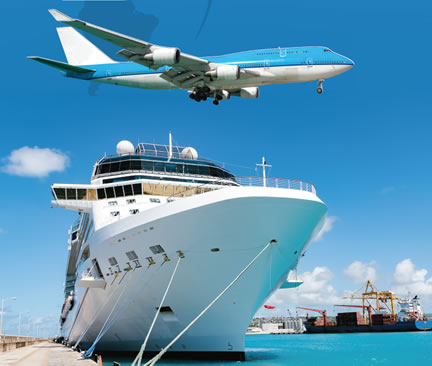“We estimate shipping could contribute about 10% of global carbon emissions by 2050 (up from 3% in 2019) under a business-as-usual scenario, assuming no adoption of new regulations that could impact energy efficiency or carbon intensity,” said Fitch
The airline sector is most exposed to long-term climate risks, but, despite growing pressure on environmental and social grounds, commercially viable alternatives will be lacking at least until 2050
Transportation sectors are fundamental to the world economy. While demand will continue growing faster than GDP, their emissions are harder to abate than other sectors’, Fitch Ratings says.
Existential threats to transportation stemming from its vulnerability to long-term climate-related risks are remote as the commercialisation of breakthrough technologies at scale, especially for airlines and shipping, will take time due to technical difficulties and the lack of economic feasibility.
The airline sector is most exposed to long-term climate risks, but, despite growing pressure on environmental and social grounds, commercially viable alternatives will be lacking at least until 2050.
Any disruptive technology is likely to be implemented by the existing airlines themselves rather than by new entrants to the market given the highly capex-intensive nature of business and high barriers to entry, such as airport slots allocated to existing airlines.
However, due to the sector’s low margins, the additional cost burden related to decarbonisation will put pressure on many airlines, especially smaller and financially weaker ones.
There are several ways that airlines can reduce per-passenger emissions, including improved operating efficiency, sustainable fuels and offsetting. But none is individually sufficient to achieve the target of a 50% reduction in aviation’s net CO2 emissions by 2050, relative to 2005 levels (a decarbonisation goal set by the International Air Transport Association).
Given the sheer volume of goods transported (80% of global trade), shipping has long been the most economical and the greenest mode of freight transportation on a per tonne-mile basis.
“We estimate shipping could contribute about 10% of global carbon emissions by 2050 (up from 3% in 2019) under a business-as-usual scenario, assuming no adoption of new regulations that could impact energy efficiency or carbon intensity,” said Fitch.
Shipping emissions are less visible than those from airlines or land transport from the end-consumers’ perspective and the sector is less exposed to environmental scrutiny and societal pressure.
The shipping industry’s environmental regulation is less mature than that of the aviation industry, with looser targets.
The International Maritime Organisation, a UN agency responsible for regulating shipping, has not implemented any market-based offsetting measure to fill the gaps in emissions curtailment until technology, operations and infrastructure measures provide long-term solutions.
Public road passenger transport markets differ from aviation or shipping due to the presence of a large number of local-, regional- and national-level providers and operators and the greater role of public authorities.
Alternative technologies are at a more developed stage with a higher level of deployment than aviation and shipping but are still little-used compared to conventional technologies.
Fitch-rated logistics entities also span carbon-intense activities, such as road freight and trucking, as well as less-emitting activities including postal and parcel, freight-forwarding services, warehousing and other supply-chain services.
The decarbonisation challenge lies in freight and trucking, and the International Road Transport Union has introduced a roadmap of measures that could achieve CO2 emission reductions of 80% by 2050 compared with 2010 levels.
Given the commercial nature of road freight and logistics companies’ operations, they should have some flexibility in passing on additional costs to customers – although subject to cost comparisons to alternate modes, primarily rail, but also sometimes inland waterways.
Rail is the most energy-efficient means of motorised land passenger transport, accounting for only 1% of total CO2 emissions from transportation, and is therefore the least exposed to climate risks of all transport modes.
Still, the rail industry might invest in further decarbonisation – especially in countries with low electrification rates of the rail network.

